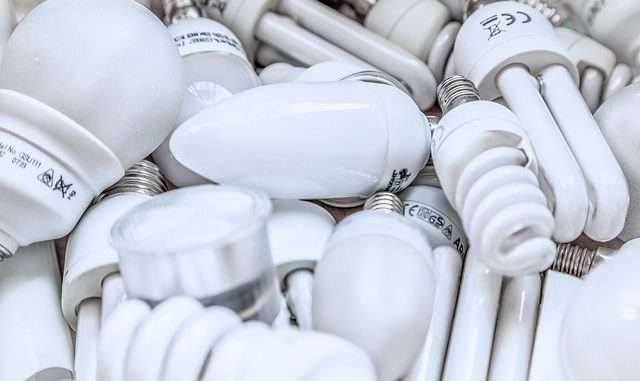
In the contemporary landscape of homeownership, individuals find themselves at a pivotal juncture where the pursuit of sustainability aligns with economic prudence. An escalating consciousness of environmental considerations, paired with the escalating costs of energy, has prompted households worldwide to recalibrate their domestic habits towards a more energy-efficient mode of living. This shift is not merely a nod to environmental stewardship but also represents a financially savvy course of action, holding the promise of substantial savings on utility expenditures. The spectrum of solutions is vast, encompassing modest adjustments like the adoption of LED lightbulbs and improved loft insulation, to participating in trailblazing initiatives such as the Home Upgrade Grant (HUG2) and the Great British Insulation Scheme. Collectively, these strategies and programmes serve as the framework for crafting a residence that is both ecologically friendly and economically beneficial.
Read more about sustainable development.
In the realm of energy conservation, LED lightbulbs have emerged as unheralded champions. Available for purchase at modest prices, these bulbs have become emblematic of the conservation movement. Their introduction into the household is a simple yet profound measure that diminishes electricity usage and, as a result, reduces energy costs. The remarkable longevity of LED bulbs also equates to reduced frequency of replacements, thus curtailing waste. For homeowners seeking to make an immediate and measurable impact, the transition to LED lighting is an accessible and practical first step.
Alongside the revolution in lighting technology, the implementation of loft insulation is another robust defence against energy wastage. A well-insulated loft provides a formidable thermal barrier, effectively retaining heat during the colder months and repelling heat in the warmer seasons. Such a measure can significantly diminish the reliance on heating and cooling systems, yielding considerable energy savings and fostering a more consistent indoor climate. The advantages of insulation transcend monetary savings, ushering in a more comfortable and sustainable living environment.
While individual measures such as upgrading to LED bulbs and enhancing loft insulation are laudable, broader initiatives offer a more comprehensive approach to residential energy efficiency. The Home Upgrade Grant (HUG2) specifically targets homeowners with off-gas heating systems, providing financial assistance for energy-efficient upgrades that reduce carbon emissions and promote sustainable living. In a similar vein, the Great British Insulation Scheme seeks to improve home warmth and energy efficiency by proffering free or subsidised insulation to properties with lower Energy Performance Certificate (EPC) ratings.
For those with their sights set on renewable energy, the Solar Together Hertfordshire scheme encourages a community-driven, group-buying strategy to secure competitive pricing on solar photovoltaic panels and battery storage systems. This initiative not only facilitates access to solar energy but also fosters a collective approach to energy self-sufficiency.
Moreover, the Energy Company Obligation (ECO) funding plays a pivotal role in supporting measures such as loft and cavity wall insulation, and heating system enhancements. These interventions are crucial not only in the reduction of carbon emissions but also in the mitigation of fuel poverty.
The rental sector is also swept up in the energy efficiency movement, with mandates stipulating that rented properties must meet a minimum EPC rating of E, a benchmark that is slated to rise to D by 2025 and C by 2030. This regulatory landscape underscores the necessity for landlords to invest in energy-efficient properties in order to align with environmental objectives and adhere to legal requirements.
Both homeowners and tenants with an interest in energy improvements can explore options such as ECO Flex funding, subject to eligibility criteria. Caution is advised, however, to guard against unscrupulous traders aiming to exploit home improvement initiatives.
Energy efficiency upgrades extend their benefits beyond the realm of finance; they also contribute to a healthier living environment. Warmer homes can combat issues like dampness and mould, which pose risks to health. EPC ratings provide a clear metric for property owners to gauge and enhance their energy performance. Government resources, including the EPC web page, along with tools like the HEAT app, offer bespoke advice to facilitate these improvements.
Even minor behavioural changes can yield substantial outcomes. For instance, ensuring appliances are turned off at the wall when not in use can prevent superfluous energy consumption. Together with the transition to LED lighting, such small actions can result in a noticeable reduction in energy bills.
Homeowners are further supported by organisations like the Energy Saving Trust, Uswitch, SuperHomes, and HERO Plans, which offer a wealth of information and tailored solutions for retrofitting properties. These resources, in conjunction with the grants and schemes available, empower individuals to transform their homes into models of sustainability and cost efficiency.
The path to an energy-efficient home is paved with a combination of tried-and-true methods and innovative assistance programmes, all aimed at fostering sustainable living. By embracing these opportunities, individuals can make significant progress in environmental stewardship while enjoying the advantages of a more cost-efficient residence. The march towards energy efficiency is a collective endeavour, with each step contributing to a future that is both sustainable and economically sound.


Be the first to comment